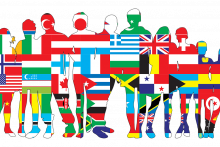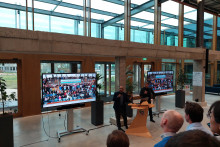This emerges from the official head counts announced today by the universities. They are using it as an opportunity to make an appeal to politicians: they want more options to control the influx of international students.
For years, the universities have been complaining that the workload has become excessive, partly because they are attracting an increasing number of students. One of the reasons for that constant growth is that so many study programmes are taught in English and more and more foreign students are coming to the Netherlands. That has further implications: lecture halls are busy and for some fixed-quota programmes Dutch students are losing out to internationals.
This week the House of Representatives is debating the question of internationalisation in higher education. The universities want to retain the good elements of internationalisation, they say in a press release, while limiting the number of international students in certain study programmes.
Wish
Their wish is to fix the maximum number of admissions for an English-language version of popular study programmes. That automatically means a maximum number of international students, while Dutch students can take on the Dutch-language variant without hindrance. A bill that would make this possible has been submitted for Senate approval but is now on the back burner because of the change of government.
Universities also want study programmes to be allowed to establish a maximum number of students from outside Europe. Then they would deal with applicants from Germany, Belgium and Switzerland, for example, differently from those from China, India and Brazil.
Furthermore, the universities want to be able to set an ‘emergency stop’ if demand for a study programme grows unexpectedly quickly. This is currently not permitted by law. It needs to be made clear in advance whether a study programme admits a limited number of students.
First-year students
In fact, a wave of first-year students came to the universities in 2020. That was because of the coronavirus crisis: the central exams were cancelled, more students passed and a gap year made little sense. In 2021 fewer first-year students came to the universities but there were still more than in 2019, the year before the coronavirus crisis began.
Three universities are an exception: they saw a rise in the number of first-year Bachelor’s programme students. They are the University of Amsterdam (UvA), Erasmus University Rotterdam and the University of Twente. The sharpest fall in new admissions occurred in Utrecht, Nijmegen, Eindhoven and Wageningen.

© HOP. Source: Association of Universities in the Netherlands.
Higher professional education students
The total number of Bachelor’s programme students rose by 3.5 percent but the total number of Master’s students rose even more: 4.9 percent. This is due not only to the number of foreign students but also to the number of students in higher professional education that go on to pursue a Master’s degree at a university. “That number rose by 21.3 percent last year, and this year there has been a further increase of 7.7 percent”, reports Universities of the Netherlands (UNL).







